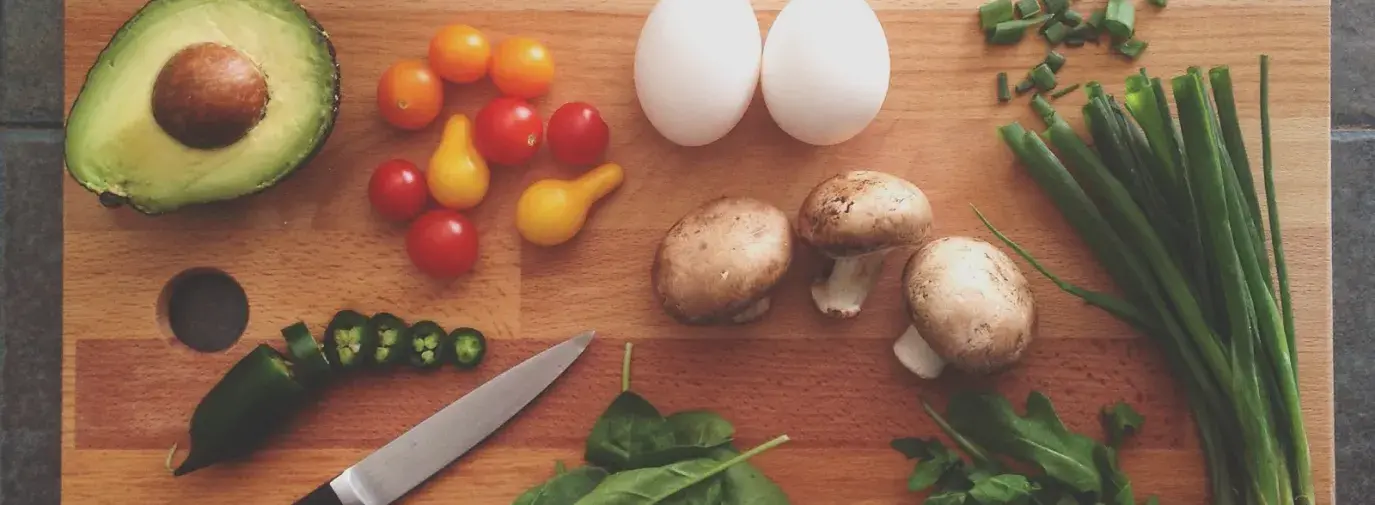
Reduce your diet’s impact on the planet by adopting an eco-friendly meal plan this week or all year. Even adopting one day a week of planet-friendly eating can make a huge impact.
Day-By-Day Meal Plan for a Health Planet
MONDAY: Meatless/Vegan Monday
During WWI, the government encouraged Americans to reduce their intake of staple foods to aid the war effort—in part by adopting Meatless Monday and Wheatless Wednesday. Though those days were left behind after the war, climate activists have also pushed for people to eat meat-free at least one day per week. Nearly 60% of all global greenhouse gas emissions can be contributed to animal agriculture, according to research published in academic journal Nature Food.
Ideas for vegetarian dinner:
- Peppers stuffed with rice and organic meatless soy “beef” or “chicken.” To make it vegan, forgo cheese topping and use salsa, vegan cheese, or olive tapenade instead.
- Tex-mex veggie bowl: Add rice, beans, sautéed veggies, guacamole, and salsa to a bowl in whatever proportions make you happy. Enjoy a tortilla on the side, or sprinkle tortilla chips on top.
TUESDAY: Reconsider Your Meal Kit
Do you get mail-order meal kits from companies like Blue Apron or Hello Fresh? The insulated boxes include enough portioned and prepped ingredients to quickly whip up a meal for two or four.
With these boxes, you don’t need to shop or plan and there often isn’t much food waste at meal-time. But the ingredients are often wrapped in lots of plastic. We dug deep in our article “Are Meal Kits Recipes for Fun, or Waste?” and determined a good/better/best of all the plans we could find, including organic meal-kit options.
Idea for meal kit dinner: Meal kit companies often post fun recipes online for free, so you can save money by buying the ingredients yourself.
- From Whole Foods meal plan service: Layered vegetable enchiladas.
- Find recipes from Blue Apron: blueapron.com/pages/sample-recipes/.
WEDNESDAY: Try Local Flavors
Ever heard the term “locavore,” meaning someone who eats local food? It’s not possible for all foods all the time, but there are great benefits to eating local when you can:
- Taste: local food might taste better because it was picked at its peak, instead of weeks earlier, like produce you find at the grocery store.
- Climate impact: It travels less distance to get to you, which lowers the transportation footprint.
- Supporting local economies: Buying local keeps money circulating in your local economy. Plus, knowing the farmers means you can ask questions about how your food was grown and engage in conversations about important topics, like how regenerative agriculture helps soil health and fights climate change.
Incorporate local food by finding a farmers’ market in your area or joining a Community Supported Agriculture (CSA) program, which delivers boxes of local food to your door or an easily accessible location every week. Find a CSA or market at localharvest.org.
Idea for local dinner:
- Veggie skewers: Add seasonal veggies and organic tofu or chicken pieces to skewers. Brush with BBQ sauce, salad dressing, or oil and a favorite spice blend. Bake or grill. Seasonalfoodguide.org can help you find out what’s in season.
THURSDAY: Feeling Fishy
Fish is broadly considered a healthy food, with less fat and just as much protein as other meats, plus omega-3s, calcium, and other minerals. There’s not currently a certification for USDA organic fish. But some methods of fishing aren’t sustainable, like bottom-trawling, which can speed up coral reef destruction. Sometimes, eating specific types of fish isn’t sustainable, as they may be chronically over-fished, or unhealthy because they may have high concentrations of mercury.
The best way to get high-quality seafood that’s caught in an eco-friendly way is to buy local and check labels. If you have a fish market in your community, talk to the employees about where fish comes from. In stores, look for labels including Marine Stewardship Council, Fishwise, and Seafood Safe. Learn more about those labels and about getting truly sustainable seafood.
Monterey Bay Aquarium’s Seafood Watch has resources about finding safe, sustainable seafood, including an app you can use in the grocery store to see if the brands you like are green.
FRIDAY: Eating Out, Green
Many folks who are interested in their health and the health of the Earth avoid eating out because food tends to be more processed, or when it’s organic and unprocessed, it can get rather pricey. That doesn’t mean you can’t treat yourself to a night out once in a while. Check GreenPages.org for certified green restaurants, as well as the Green Restaurant Association, dinegreen.com.
SATURDAY: Be Aware of Food Waste
A study from the Natural Resources Defense Council found that 40% of food in the US is wasted. Much of it never makes it to fridges and pantries as it goes bad on farms, in trucks, or at grocery stores. But it’s estimated that households waste a quarter of the groceries they bring home—that’s like leaving a bag of groceries you’ve paid for at the store every week!
Make sure you use up the food you buy. We have lots of tips for how to make the most out of fruit and veggies and pantry staples that are aging.
Use-it-up dinner ideas:
- Frittata or a quiche. Add five eggs and a splash of milk to whatever vegetables or cooked meats you have left over from previous meals and bake in a pie pan (with crust to have a quiche, or none to make a frittata).
- Fried rice: Stir leftover cooked rice in a hot pan with eggs, cooked meats, and cooked or raw veggies, along with a bit of oil, soy sauce, and hot sauce to taste.
SUNDAY: Shopping Day
Going to the grocery store is a great way to vote with your dollars about what kind of world you want to see.
Sunday dinner ideas:
- Come full circle with climate-friendly lentil soup. Lentils have the lowest carbon footprint per pound than any other food. Plus, this is a one-pot meal, which is great for a busy day.
Updated January 2024







